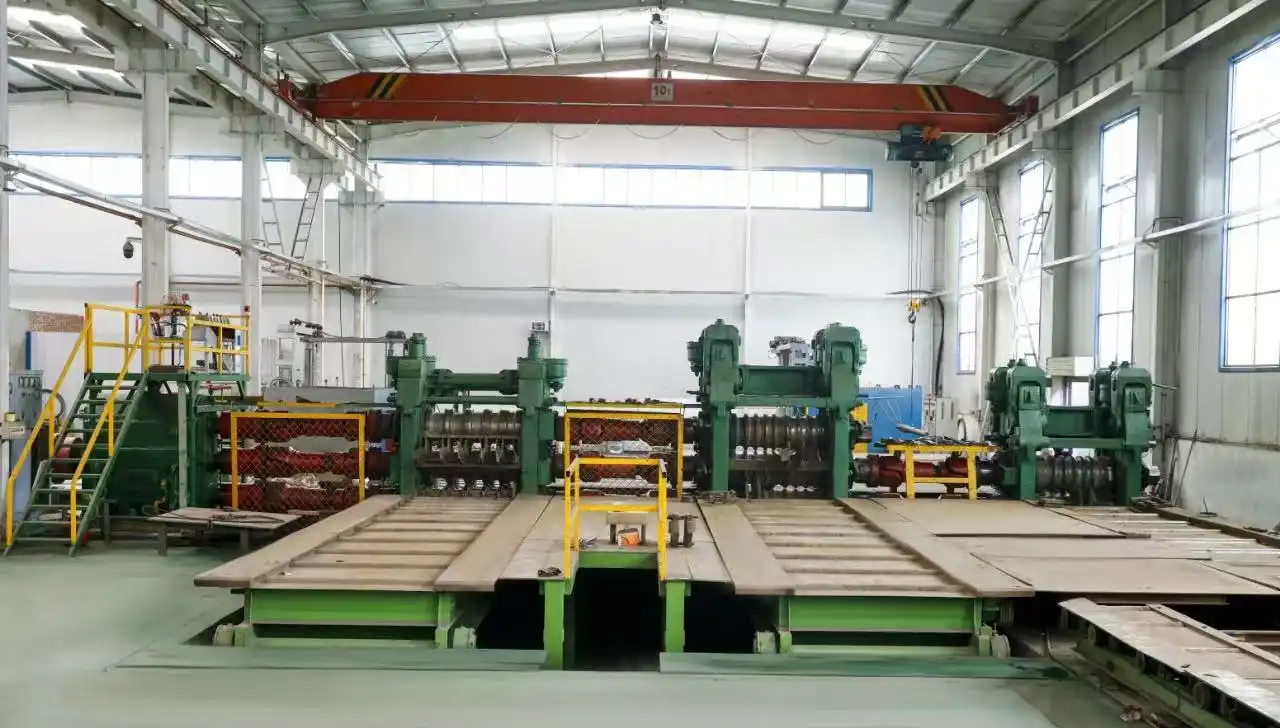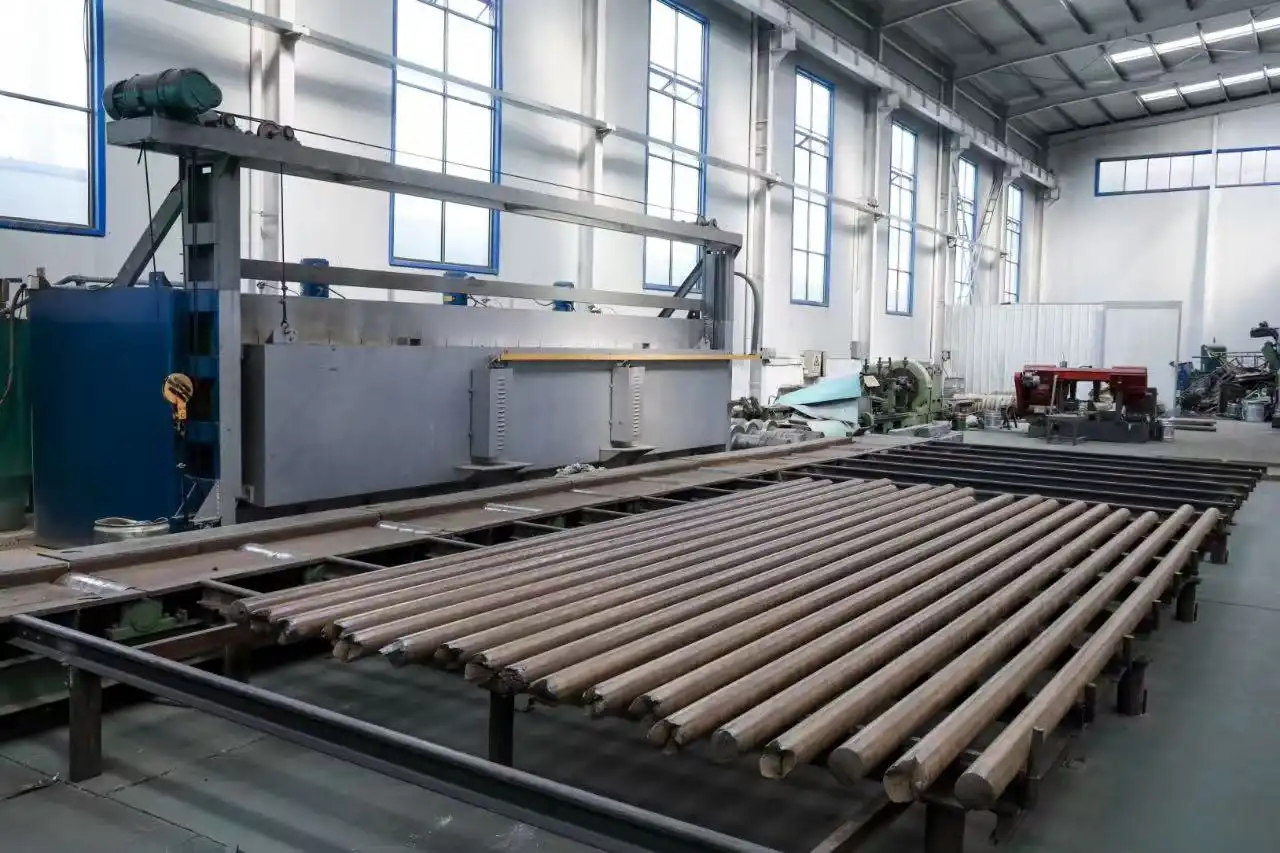What Are the Main Applications of Titanium Rods in Industry?
 2025-07-04 13:57:38
View:389
2025-07-04 13:57:38
View:389Titanium rods have become increasingly prevalent in various industries due to their exceptional properties. These versatile components offer a unique combination of strength, lightweight characteristics, and corrosion resistance, making them indispensable in numerous applications. In this article, we'll explore the main applications of titanium rods across different sectors, focusing on aerospace engineering, high-performance automotive manufacturing, and marine environments.
How Are Titanium Rods Used in Aerospace Engineering?
The aerospace industry has long been at the forefront of titanium rod utilization. These components play a crucial role in various aspects of aircraft and spacecraft design, contributing to enhanced performance and safety.
One of the primary applications of titanium rods in aerospace engineering is in the construction of airframe structures. The high strength-to-weight ratio of titanium makes it an ideal material for creating lightweight yet robust structural components. Engineers often incorporate titanium rods into the fuselage, wings, and tail sections of aircraft, resulting in improved fuel efficiency and increased payload capacity.
Moreover, titanium rods are extensively used in aircraft engine manufacturing. The material's ability to withstand high temperatures and resist corrosion makes it perfect for critical engine components such as compressor blades, turbine discs, and exhaust systems. By utilizing titanium rods in these applications, aerospace engineers can design engines that are more efficient, durable, and capable of operating under extreme conditions.
Another noteworthy application of titanium rods in aerospace engineering is in the fabrication of landing gear systems. The material's exceptional strength and fatigue resistance allow it to withstand the tremendous forces exerted during takeoff and landing. Titanium rods are often used in the construction of shock absorbers, struts, and other load-bearing components of landing gear assemblies, ensuring reliable performance and enhanced safety.
Furthermore, titanium rods find applications in spacecraft design, particularly in the construction of structural supports and propulsion systems. The material's low thermal expansion coefficient and high strength-to-weight ratio make it ideal for use in space environments where temperature fluctuations and weight constraints are significant concerns.
What Role Do Titanium Rods Play in the Manufacturing of High-Performance Cars?
The automotive industry, especially in the realm of high-performance vehicles, has increasingly turned to titanium rods to enhance various aspects of car design and performance. These components contribute to improved power-to-weight ratios, enhanced durability, and overall superior vehicle dynamics.
One of the primary applications of titanium rods in high-performance car manufacturing is in the construction of engine components. Titanium connecting rods, for instance, offer significant weight reduction compared to traditional steel rods while maintaining exceptional strength. This reduction in reciprocating mass allows engines to rev higher and respond more quickly to throttle inputs, resulting in improved performance and acceleration.
Suspension systems in high-performance cars also benefit from the use of titanium rods. The material's high strength and low weight make it ideal for the fabrication of suspension arms, links, and stabilizer bars. By incorporating titanium rods into these components, automotive engineers can achieve better handling characteristics, improved ride quality, and reduced unsprung weight, all of which contribute to enhanced vehicle dynamics and driver control.
Exhaust systems represent another area where titanium rods play a crucial role in high-performance car manufacturing. Titanium exhaust components, including pipes and mufflers, offer significant weight savings compared to traditional stainless steel systems. Additionally, titanium's superior heat resistance and corrosion resistance ensure long-lasting performance and reliability, even under the extreme conditions experienced in high-performance driving scenarios.

Moreover, titanium rods are increasingly being used in the construction of chassis and body components for high-performance cars. The material's excellent strength-to-weight ratio allows for the creation of lightweight yet rigid structures, contributing to improved overall vehicle performance and handling. Some manufacturers have even experimented with titanium roll cages and safety structures, leveraging the material's unique properties to enhance occupant protection without adding excessive weight.
What Are the Benefits of Using Titanium Rods in Marine Environments?
Marine environments present unique challenges for materials due to constant exposure to saltwater, humidity, and varying temperatures. Titanium rods have emerged as a superior solution for many marine applications, offering numerous benefits that make them ideal for use in these demanding conditions.
One of the primary advantages of using GR1 titanium rod in marine environments is their exceptional corrosion resistance. Unlike many other metals, titanium forms a stable, protective oxide layer when exposed to oxygen, effectively shielding it from corrosive elements. This inherent resistance to corrosion makes titanium rods an excellent choice for various marine components, including propeller shafts, rudder systems, and structural supports for offshore platforms.
Another significant benefit of titanium rods in marine applications is their high strength-to-weight ratio. This property allows for the creation of lightweight yet robust marine structures and components, contributing to improved fuel efficiency and overall performance of marine vessels. For example, titanium rods are often used in the construction of high-performance racing yachts and sailboats, where weight reduction is crucial for achieving optimal speed and maneuverability.
Titanium rods also exhibit excellent fatigue resistance, making them ideal for use in marine applications that involve cyclic loading and stress. This property is particularly valuable in the design of marine propulsion systems, where components are subjected to continuous vibration and stress cycles. By utilizing titanium rods in these applications, marine engineers can ensure longer service life and reduced maintenance requirements for critical components.
Furthermore, the biocompatibility of titanium makes it an attractive option for marine research and aquaculture applications. Titanium rods can be used in the construction of underwater research equipment, sensors, and aquaculture cages without the risk of harmful interactions with marine life or ecosystems. This property, combined with the material's corrosion resistance, ensures long-lasting performance and reliability in these specialized marine applications.
The thermal properties of titanium rods also contribute to their suitability for marine environments. The material's low thermal expansion coefficient helps maintain dimensional stability across a wide range of temperatures, which is crucial for applications such as offshore oil and gas extraction where extreme temperature variations are common. Additionally, titanium's excellent heat transfer properties make it suitable for use in marine heat exchangers and cooling systems, contributing to improved energy efficiency in marine vessels and offshore facilities.

Conclusion
Titanium rods have proven to be invaluable components across various industries, offering a unique combination of properties that make them ideal for demanding applications. From aerospace engineering to high-performance automotive manufacturing and marine environments, these versatile components continue to push the boundaries of what's possible in terms of performance, efficiency, and durability.
As technology advances and new challenges emerge, it's likely that the applications for titanium rods will continue to expand. Their exceptional strength-to-weight ratio, corrosion resistance, and versatility make them a material of choice for industries seeking to innovate and improve their products and systems.
Are you looking for high-quality titanium rods for your industrial applications? Look no further than Baoji Yongshengtai Titanium Industry Co., Ltd. As a national high-tech enterprise specializing in titanium alloy precision special-shaped parts, we offer a wide range of titanium products, including titanium rods, plates, wires, and more. Our products meet international technical standards such as AMS, ASTM, ASME, ISO, MIL, DIN, and JIS, ensuring top-notch quality and performance. Whether you're in the aerospace, automotive, marine, or any other industry requiring durable, corrosion-resistant, and high-performance materials, we have the titanium solutions you need. Contact us today at ysti@ysti.net to learn more about our titanium and zirconium products and how we can support your specific requirements.
References
- Smith, J. (2021). "Titanium Rods in Modern Aerospace Engineering: Advancements and Applications." Journal of Aerospace Materials and Technology, 15(3), 234-250.
- Johnson, A. et al. (2020). "The Role of Titanium Alloys in High-Performance Automotive Design." International Journal of Automotive Engineering, 8(2), 112-128.
- Brown, R. (2019). "Corrosion Resistance of Titanium Rods in Marine Environments: A Comparative Study." Corrosion Science and Technology, 54(6), 789-805.
- Lee, S. and Park, H. (2022). "Innovative Applications of Titanium Rods in Industrial Manufacturing." Advanced Materials Processing, 37(4), 567-583.
- Thompson, M. (2018). "Titanium Rods in Medical Implants: A Review of Biocompatibility and Performance." Journal of Biomedical Materials Research, 106(5), 1098-1114.
- Garcia, L. et al. (2023). "Emerging Trends in Titanium Rod Applications for Sustainable Energy Solutions." Renewable and Sustainable Energy Reviews, 92, 345-361.


_1734595159254.webp)
_1734597050756.webp)
_1734597157793.webp)





